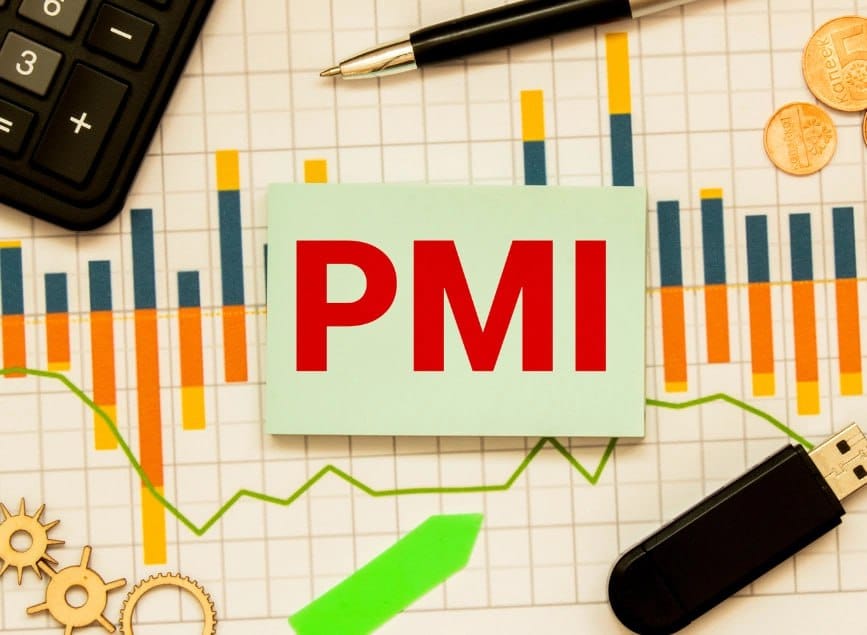
Global Economic Outlook – April 2025
Overall Global Economic Outlook
As we enter April 2025, the global economic landscape is marked by modest growth, persistent inflationary pressures, and heightened policy uncertainties. Divergent trends across major economies underscore the complex environment facing policymakers and investors.
The Trump administration’s aggressive trade policies, including tariffs ranging from 10% to 25% on Canada, Mexico, and China, have significantly heightened global policy uncertainty. The U.S. Policy Uncertainty Index remains near record levels, dampening investor confidence and economic growth. Financial markets have responded with volatility—U.S. equities have declined, bond yields have fallen, and the U.S. dollar has weakened amid concerns that protectionist policies could fuel stagflation.
Meanwhile, geopolitical tensions present a mixed outlook. Optimism has grown regarding a potential peace agreement between Russia and the U.S. over Ukraine, though significant challenges remain. However, tensions in the Middle East are escalating. The U.S. has intensified its attacks on the Houthis in Yemen, while Israel has resumed strikes against Hamas, Hezbollah, and Iranian-linked targets. In response to U.S. calls for negotiations, the Iranian regime has asserted its readiness to defend itself against potential attacks by the U.S. and Israel.
Given these risks, economic growth projections have been revised downward. Global GDP growth is now forecasted to decelerate to 3.1% in 2025 and 3.0% in 2026, with significant regional variations. While the U.S. economy faces slowing momentum, the Eurozone and China are also grappling with subdued economic prospects. Meanwhile, emerging markets such as India continue to outperform, contributing to global economic resilience.
Global inflation is gradually moderating to 3.5% in 2025 but remains above pre-pandemic levels, posing challenges for central banks. We expect central banks to resume rate cuts following a brief pause in some cases, while others, like the ECB, are expected to continue easing. Faster-than-anticipated monetary policy adjustments could provide a boost to global growth.
Energy markets remain volatile, with oil prices fluctuating around $69 per barrel due to OPEC+ decisions and geopolitical uncertainties. Meanwhile, commodity prices, including metals and agricultural goods, are experiencing upward pressure driven by supply constraints and rising demand from emerging markets.
The global economy in 2025 is undergoing a “growth rotation,” with the U.S. decelerating while Europe and Asia experience modest improvements. Policymakers face the challenge of managing inflation, trade protectionism, and geopolitical shocks while fostering structural economic reforms. Businesses must prioritize adaptability, supply chain resilience, and strategic planning to navigate this complex economic landscape.
U.S. Economic Review: Early 2025
The U.S. economy faces a mix of challenges in early 2025, characterized by slower GDP growth, persistent inflationary pressures, a cooling labor market, and uncertainty surrounding trade policies. While sectors like technology and defense demonstrate resilience, the overall outlook remains one of cautious optimism, tempered by the potential for further volatility due to ongoing policy and trade uncertainties.
GDP Growth
U.S. GDP growth has slowed significantly, with projections for 2025 suggesting a growth rate between 1.7% and 2.2%, down from 2.8% in 2024. This slowdown is primarily driven by trade uncertainties, policy changes, and reduced consumer spending.
Inflation
Inflation remains elevated, with the Personal Consumption Expenditures (PCE) Price Index indicating persistent price pressures. In February 2025, the core PCE rose by 0.4%, contributing to a 2.8% annualized rate. Meanwhile, the Consumer Price Index (CPI) for February came in at 2.8% year-over-year, slightly below expectations (2.9%) and down from 3.0% in January. On a monthly basis, inflation rose by 0.2%, softer than the 0.3% forecast.
Core CPI year-over-year slowed to 3.1%, just below the 3.2% expected and 3.3% from the previous period. Core CPI month-over-month increased by 0.2%, below the 0.3% estimate. These signs of easing price pressures could influence the Federal Reserve’s future policy stance.
Labor Market
The U.S. labor market is showing signs of cooling. Although job growth has remained steady, it is expected to slow, with monthly job additions predicted to range between 80,000 and 100,000, down from an average of 200,000 in early 2025. The unemployment rate, which stood at 4.1% in February 2025, may see upward pressure due to policy uncertainty and the impact of trade tariffs. Key sectors like manufacturing and retail are particularly affected by the ongoing trade tensions.
Consumer Spending and Confidence
Consumer spending showed modest growth in early 2025, with a 0.4% increase in retail sales in February, driven by durable goods purchases. Additionally, the Redbook Index reported a 5.6% year-over-year increase in U.S. retail sales, up from the previous 5.2%. This indicates resilient consumer spending despite broader economic uncertainties, particularly in the retail sector.
However, consumer confidence has declined. The University of Michigan’s Consumer Sentiment Index dropped by 12%, reflecting growing pessimism regarding personal finances and overall economic conditions. Similarly, the Conference Board Consumer Confidence Index fell to 92.9 in March, missing expectations of 94.2 and sharply down from February’s 100.1. This marks the lowest reading since mid-2023, signaling heightened consumer concerns about the economy and future outlook.
U.S. Economic Outlook for April 2025
In April 2025, several key economic data releases are scheduled that will provide valuable insights into the U.S. economy. These releases will be crucial for assessing the current state and future trajectory of the economy, particularly in terms of employment, inflation, consumer behavior, and overall economic growth. Here are the most significant events to monitor:
- Job Openings and Labor Turnover Survey (JOLTS) – Tuesday, April 1
- Nonfarm Payrolls (NFP) Report – Friday, April 4
- Metropolitan Area Employment and Unemployment Report – Wednesday, April 9
- Consumer Price Index (CPI) – Thursday, April 10
- Producer Price Index (PPI) – Friday, April 11
- Retail Sales Report – Thursday, April 16
- Gross Domestic Product (GDP) Report – Tuesday, April 29
- Job Openings and Labor Turnover Survey (JOLTS) (Second release) – Tuesday, April 29
Federal Reserve’s Interest Rate Outlook
As of March 2025, the Federal Reserve has kept interest rates between 4.25% and 4.5%. Despite persistent inflationary pressures, the Fed is expected to cut rates at least twice in 2025, bringing them to a range of 3.75% to 4.00%. The Fed’s cautious stance reflects concerns about stagflation risks, where high inflation is coupled with slower economic growth.
Macroeconomic Factors
On the macroeconomic front, trade policies—particularly the tariffs imposed on China, Mexico, and Canada—have contributed to heightened market volatility. Investor sentiment has been negatively affected by concerns about the scope and duration of these tariffs, as well as potential retaliatory actions. This uncertainty is expected to persist throughout April 2025. However, faster-than-expected productivity gains or tax cuts could help offset some of the economic slowdown.
Corporate Investment Trends
Corporate investment has slowed due to ongoing policy uncertainty, particularly in sectors dependent on stable trade relations. However, sectors such as technology (e.g., artificial intelligence) and defense are expected to perform relatively well, providing some resilience in the overall economy.
Wall Street and USD Response and Expectations
On Wall Street, major indices such as the S&P 500 and Nasdaq have seen a roughly 6% decline year-to-date, while volatility remains elevated due to mixed corporate earnings and shifting expectations from the Federal Reserve. Tech stocks have been the hardest hit, facing challenges from higher borrowing costs. As Q1 2025 earnings reports are set to be published this month, several key results are expected to influence market sentiment and the economic outlook.
Given Wall Street’s underperformance so far this quarter, we anticipate a 9% growth for the S&P 500 in 2025, with expectations for a recovery in the second half of the year.
The earnings season is unfolding amidst broader economic challenges, including trade policy uncertainties and inflationary pressures. Investors should closely monitor these developments, as they may significantly affect corporate earnings and market dynamics in the coming months.
Despite these headwinds, economic activity in sectors like manufacturing and industry is expected to outperform, helping to sustain long-term optimism and preventing a sharp downturn in the stock markets due to fears of tariff wars and geopolitical issues.
The U.S. dollar (DXY) is expected to maintain its strength, trading within the range of 103 to 104. This resilience is largely driven by investors’ preference for safe-haven assets amid ongoing global uncertainties. The dollar’s performance is closely tied to expectations surrounding Federal Reserve policies and upcoming economic data releases.
The dollar’s strength is supported by the U.S. economy’s solid growth, fueled by strong productivity gains, increased business investment, and a favorable yield differential compared to other developed markets. However, recent analyses indicate that the dollar may be overvalued, with discussions emerging about potential policy measures aimed at devaluing the currency to improve international competitiveness. Such strategies, reminiscent of previous international agreements, introduced added complexity to the dollar’s outlook.
Eurozone and Euro Outlook – April 2025
As of April 2025, the Eurozone economy is navigating a complex landscape characterized by moderate growth, easing inflation, and emerging trade tensions.
Trade policy uncertainties, particularly surrounding U.S. tariffs, are generating volatility in financial markets. FX markets remain skeptical of the U.S. administration’s trade stance, which fluctuates between threats and exemptions, contributing to market unease.
The Conference Board forecasts that the Eurozone’s real GDP will grow by 0.9% in 2025 and 1.2% in 2026, slightly below previous projections. This adjustment is driven by a less favorable export outlook, influenced by anticipated retaliatory tariffs on U.S. imports worth nearly €26 billion.
Overview of the current state of the euro area economy
Recent data from France and Spain show inflation trending below expectations. In March, France’s inflation held steady at 0.9%, below the forecast of 1.1%, while Spain’s inflation decreased from 2.9% to 2.2%, surpassing forecasts. These trends have led to expectations of further interest rate cuts by the European Central Bank (ECB).
Germany’s Ifo Business Climate Index rose to 86.7 in March, up from 85.3 but slightly below the forecast of 86.8. Business Expectations increased to 87.7, beating February’s 85.6 but missing the expected 87.9. The Current Assessment edged up to 85.7 from 85.0, signaling modest optimism despite economic uncertainties.
Eurozone’s HCOB Manufacturing PMI rose to 48.7 in March, surpassing expectations of 48.3 and increasing from 47.6 in February, though still in contraction. The Services PMI dipped to 50.4, below the forecast of 51.2 and slightly down from 50.6, signaling weaker expansion. Composite PMI edged up to 50.4 from 50.2, indicating sluggish overall growth.
Consumer confidence fell to -14.5 in March, worse than expected -13.0 and slightly down from -13.6 in February. The decline reflects growing caution among consumers amid ongoing economic uncertainties.
On the labor market, the unemployment rate remained stable at 6.2% in January, slightly better than the expected 6.3%, indicating a stable labor market despite economic challenges.
The Core Consumer Price Index (CPI) in the Eurozone rose 0.5% MoM in February, slightly below the expected 0.6% but rebounding from -0.9% in January. Yearly, core inflation remained steady at 2.6% YoY, matching forecasts but slightly lower than January’s 2.7%.
Meanwhile, headline CPI increased by 0.4% MoM, falling short of expectations of 0.5%, but still a notable improvement from -0.3% in January. On an annual basis, inflation eased to 2.3% YoY, down from 2.5% previously.
ECB Actions and Outlook
The ECB recently decided to lower its three key interest rates by 25 basis points. Effective March 12, 2025, the deposit facility rate decreased to 2.50%, the main refinancing operations rate to 2.65%, and the marginal lending facility to 2.90%.
ECB Vice-President Luis de Guindos expressed optimism, noting consistent progress in the disinflation process towards the 2% target and the achievement of sustainable price stability in the coming quarters. However, with the potential economic impacts of upcoming U.S. tariffs, ECB Governing Council member Pierre Wunsch suggested that the ECB may consider pausing interest rate adjustments in April. The proposed U.S. tariffs, particularly a 25% duty on imported vehicles starting April 3, could adversely affect Eurozone growth and complicate inflation dynamics.
The key economic data releases scheduled for April 2025 in the Eurozone:
Core CPI Flash Estimate & CPI Flash Estimate and Final Manufacturing PMI (April 1), Retail Sales (April 7), German ZEW Economic Sentiment (April 14), Eurozone Retail Sales (April 16), European Central Bank (ECB) Interest Rate Decision (April 17), German Ifo Business Climate Index (April 23), German Preliminary CPI and Spanish Flash CPI on April 29.
These releases will be pivotal in assessing the Eurozone’s economic performance, offering insights into inflation trends, consumer behavior, and overall economic sentiment.
Euro/USD Exchange Rate
The EUR/USD pair has remained under pressure, hovering around 1.08, as the policy divergence between the Fed and ECB continues to favor the U.S. dollar. Investors are closely monitoring upcoming ECB statements for signals of potential monetary easing later in the year.
UK Economic Outlook – April 2025
As of April 2025, the United Kingdom’s economy faces a mix of fiscal challenges, modest growth, and evolving monetary policies.
In Q4 2024, the UK’s annual GDP growth was recorded at 1.5%, slightly surpassing expectations of 1.4%, and notably higher than the 0.9% expansion observed in Q3. On a quarterly basis, GDP grew by 0.1%, in line with forecasts, and a modest improvement over the stagnation (0.0%) seen in the previous quarter, signaling some resilience in the economy.
Despite this, the Current Account Deficit widened to £21.0 billion in Q4, considerably exceeding the anticipated £16.7 billion and the previous £12.5 billion. This widening deficit reflects increased capital outflows and trade imbalances. In January 2025, the Trade Balance stood at -£17.85 billion, higher than the forecasted -£16.80 billion. The Non-EU Trade Deficit narrowed to £7.07 billion from £8.04 billion in the previous month, indicating some adjustments in trade dynamics.
Business Investment also showed a mixed performance in Q4, contracting by 1.9% quarter-on-quarter, a smaller decline than the expected 3.2%, but a notable reversal from the 2.2% growth seen in Q3. On a year-on-year basis, Business Investment increased by 1.8%, outperforming the forecasted decline of 0.7%, though still significantly lower than the 5.6% growth recorded in the previous quarter. This decline in quarterly investment reflects ongoing economic uncertainty, tighter financial conditions, and more cautious corporate spending, which may weigh on the UK’s broader economic outlook.
These figures underscore the ongoing challenges faced by the UK economy, with sluggish growth and external imbalances continuing to affect economic performance. Moody’s has expressed concerns about the fiscal outlook, highlighting that recent budgetary measures reflect ongoing challenges. While efforts to restore fiscal headroom are acknowledged, Moody’s suggests that additional spending cuts or new revenue measures may be required to ensure long-term fiscal sustainability.
In April 2025, the UK’s economic landscape is characterized by fiscal austerity measures aimed at reducing the budget deficit, modest growth projections, and a complex inflationary environment. While certain sectors, particularly retail, show positive trends, the overall outlook will depend on how effectively fiscal policies are implemented and their broader socioeconomic impacts.
Chancellor Rachel Reeves has introduced significant fiscal measures to address the budget deficit. The Spring Statement outlined a £14 billion repair package, which includes £3.4 billion in welfare savings by 2029-30, a move expected to increase relative poverty for around 250,000 individuals. Additionally, day-to-day departmental spending is set to decrease by £3.6 billion, with no new tax changes or borrowing permitted. The Office for Budget Responsibility forecasts 1% GDP growth in 2025, rising to 1.9% by 2026, with inflation projected to ease to 3.2% in 2025.
UK Monetary Policy and Inflation
The Bank of England’s monetary policy is under close scrutiny as inflation continues to fluctuate. The Office for Budget Responsibility projects that inflation will peak at 3.7% in mid-2025, driven by higher energy and food prices, before returning to the Bank of England’s 2% target later in the year.
The UK’s Consumer Price Index (CPI) increased by 0.4% month-on-month in February, slightly below the expected 0.5%. On an annual basis, inflation slowed to 2.8%, down from 3.0% in January, marking further progress towards the Bank of England’s target.
In March 2025, the Bank of England maintained its interest rate at 4.50%, as expected. However, a hawkish tilt was observed within the Monetary Policy Committee (MPC), with one member voting for a rate cut, down from two expected votes. Eight members supported keeping rates steady, while none voted for a hike. This shift in sentiment indicates a reduced likelihood of near-term easing, despite the ongoing weakness in the economy.
UK Economy and Retail Sector Performance
In March 2025, the UK’s S&P Global Manufacturing PMI fell to 44.6, below the anticipated 47.3 and down from the previous reading of 46.9, indicating a deeper contraction in the manufacturing sector. Conversely, the Services PMI rose sharply to 53.2, surpassing the forecast of 51.2 and February’s 51.0, pushing the Composite PMI up to 52.0 from 50.5. This suggests a stronger overall economic expansion, with services providing support amid broader economic challenges.
In contrast to the broader economic slowdown, the retail sector has displayed resilience. Retail sales in Great Britain grew by 1.0% in February, driven by higher consumer spending in department stores, hardware shops, and clothing outlets. This growth defied expectations of a 0.4% decline and significantly exceeded the anticipated 0.3% contraction, although it was slightly below January’s 1.4% increase. Year-over-year, Retail Sales rose by 2.2%, surpassing the forecasted 0.5% and the previous growth of 0.6%. Core Retail Sales (excluding fuel) also rose by 1.0% MoM, well above the expected 0.5% decline, though lower than January’s 1.6% growth. On an annual basis, Core Retail Sales increased by 2.2%, exceeding the forecasted 0.4% growth. This strong retail performance indicates resilient consumer spending, which could help support broader economic stability despite inflationary pressures and higher interest rates.
Key Economic Indicators to Watch in the UK – April 2025
Several critical economic indicators are scheduled for release in April, providing valuable insights into the UK’s economic health. Notable data points include:
- GDP Monthly Estimate – April 12
- Claimant Count Change and Average Earnings Index – April 15
- Retail Sales and Consumer Price Index (CPI) – April 16
- Flash Manufacturing and Services PMI – April 23
- Bank of England Monetary Policy Meeting Minutes – April 23
- Public Sector Finances – April 22
These indicators will collectively provide a comprehensive view of the UK’s economic performance, covering areas such as growth, trade, consumer behavior, inflation, and fiscal health. Monitoring these releases will be crucial for understanding the current economic environment and projecting future trends.
Currency Outlook
The British pound’s performance will be influenced by both domestic fiscal policies and broader global economic conditions. Forecasts suggest that the GBP/USD exchange rate will fluctuate between 1.28 and 1.26 throughout April, reflecting the impact of domestic fiscal measures and global economic developments.
Chinese Economic Outlook, April 2025
Review of Chinese Economic Indicators (March 2025)
The People’s Bank of China (PBoC) kept its Loan Prime Rates (LPR) unchanged in March, maintaining the 1-year rate at 3.10% and the 5-year rate at 3.60%, indicating a cautious approach to monetary policy. This decision reflects an emphasis on financial stability despite ongoing economic challenges, particularly in the housing sector.
Inflation and Growth Concerns: China’s inflation remained subdued in February, with the Consumer Price Index (CPI) falling 0.7% YoY, worse than the expected 0.4% decline. Month-on-month, CPI dropped by 0.2%, and the Producer Price Index (PPI) fell by 2.2%, highlighting persistent deflationary pressures. This weak consumer demand and falling factory prices increase the likelihood of further policy support.
Economic Activity:
- The Composite PMI rose to 51.1, signaling mild economic expansion.
- The Manufacturing PMI returned to expansion at 50.2, while the Non-Manufacturing PMI remained stable at 50.4.
- Retail sales grew 4.0% YoY, slightly above expectations but still showing weak domestic demand, with year-to-date retail sales growth slowing to 2.98%.
- Fixed Asset Investment grew 4.1% YoY, beating expectations, while Industrial Production rose 5.9%, slightly above forecasts but down from the previous month’s growth rate.
Labor Market and Trade:
- The unemployment rate increased to 5.4%, above expectations, signaling ongoing labor market challenges.
- The Trade Balance reached CNY 1,226.06B, surpassing expectations and the previous surplus. However, export growth slowed to 2.3% YoY, missing expectations, and imports contracted sharply by 8.4%, indicating weaker domestic demand.
Overall, while China’s economy shows some signs of recovery, key sectors such as consumer spending and trade remain weak, raising expectations for further policy stimulus.
China and CNH Outlook – April 2025
April 2025 marks a critical period for China as it navigates the complexities of escalating trade tensions with the U.S. while implementing domestic stimulus measures. Key focal points include potential adjustments to U.S. tariff policies, the People’s Bank of China’s (PBoC) currency management strategies, and the performance of China’s technology sector amid rapid AI adoption.
China’s economic outlook for April 2025 reflects a delicate balancing act between external trade risks and domestic stimulus measures. As the yuan remains under pressure and geopolitical tensions persist, Beijing’s policy decisions will play a pivotal role in shaping investor sentiment and market stability. Investors and policymakers alike must closely monitor trade negotiations, currency movements, and fiscal policy shifts to effectively navigate the evolving economic landscape.
Trade and Economic Relations
The U.S., under the Trump administration, has imposed a 20% tariff on Chinese imports as of March 2025, with the possibility of an increase to 60%. This escalation poses a significant downside risk to China’s GDP, with estimates suggesting a potential contraction of 0.3 to 1.4 percentage points, depending on China’s response strategies, including countermeasures and trade rerouting.
President Xi Jinping continues to position China as a champion of global trade and industrial stability. In a high-profile meeting with over 40 international business leaders in Beijing, Xi reiterated China’s commitment to openness and international cooperation. This diplomatic approach is crucial as geopolitical uncertainties heighten, and global markets assess the potential ramifications of new U.S. tariffs.
Monetary and Fiscal Policy Outlook
China’s monetary policy is expected to remain accommodative, with further easing measures likely to support economic stability. Core inflation is projected to hover around 1.5% year-over-year, reflecting subdued domestic demand and persistent deflationary pressures. To counter these trends, the PBoC is expected to implement additional liquidity injections and targeted stimulus efforts.
Fiscal policy remains expansionary, with Beijing launching a RMB 14.3 trillion local government debt restructuring plan. Of this, RMB 6 trillion has been addressed through one-time central government support, easing repayment burdens and creating fiscal room for further growth initiatives. The government has also raised its fiscal deficit target for 2025 to 4.0% of GDP, up from 3.0% in 2024. This will be financed through RMB 1.3 trillion in special sovereign bonds and RMB 4.4 trillion in local government bonds, primarily allocated toward infrastructure projects and consumption subsidies.
Stimulus efforts are expected to focus on strategic sectors such as infrastructure, artificial intelligence (AI), green energy, and wage growth initiatives aimed at boosting domestic consumption.
Market Risks and Currency Outlook
A potential escalation of U.S. tariffs to 60% could exacerbate capital outflows and weaken the Chinese yuan (CNH). Additionally, ongoing instability in the property sector and entrenched deflationary expectations may further weigh on economic recovery. However, robust growth in the technology sector, particularly in AI and electric vehicles (EVs)—alongside fiscal stimulus measures could help offset these trade-related pressures.
A controlled depreciation of the yuan may serve as a policy tool to cushion the impact of tariffs and stimulate inflation. The USD/CNH exchange rate remained relatively stable, fluctuating between 7.2570 and 7.2820. Short-term expectations suggest continued trading within this range, while projections indicate a potential rise toward 7.4041 by the end of April 2025. These forecasts reflect the interplay of China’s domestic economic policies, evolving trade dynamics, and broader global macroeconomic conditions.
Japanese Economic Outlook – April 2025
Global Trade Challenges and Policy Considerations
Japan’s economic trajectory in April 2025 is shaped by a confluence of domestic and international factors. Persistent inflationary pressures, wage dynamics, sectoral performance, and evolving trade policies collectively influence the nation’s economic outlook. A key area of concern is the global trade environment, as the U.S. administration considers imposing new auto tariffs. This development introduces uncertainty and poses potential risks to Japan’s export-driven economy. Policymakers are closely monitoring these trade tensions to assess their impact on economic stability and future growth.
Current Economic Conditions and Bank of Japan Policy Overview
Inflation and Price Trends
Japan’s Core Consumer Price Index (CPI) remained steady at 2.2% in March, in line with both forecasts and the previous reading. This stability keeps the Bank of Japan’s (BOJ) monetary policy in focus as markets anticipate potential adjustments to its ultra-loose stance.
In February, Japan’s National Core CPI rose 3.0% year-over-year, slightly exceeding expectations of 2.9% but marking a decline from the previous month’s 3.2%. Headline inflation also eased, with the National CPI slowing to 3.7% from 4.0%. On a monthly basis, inflation showed signs of weakening momentum, as CPI declined by -0.1%, while the non-seasonally adjusted CPI dropped -0.4%.
Manufacturing and Services Sector Performance
Japan’s manufacturing sector continues to struggle. The au Jibun Bank Manufacturing PMI fell to 48.3 in March, missing the projected 49.2 and slipping further from 49.0 in February. This sustained contraction raises concerns over industrial weakness.
Similarly, the Services PMI experienced a sharp decline, dropping from 53.7 to 49.5, marking its first contraction in months. This downturn suggests that economic momentum in the services sector is weakening, adding to concerns over Japan’s broader growth prospects.
Industrial Production and Investment
Japan’s capacity utilization rebounded strongly in January, rising 4.5% month-over-month (MoM), a sharp improvement from December’s marginal 0.1% increase. However, industrial production declined -1.1% MoM, in line with expectations, following a -0.3% decline in the previous month. This trend highlights persistent challenges in the manufacturing sector.
Meanwhile, core machinery orders, a key indicator of capital investment, declined -3.5% MoM, significantly worse than the expected -0.1% drop and December’s -0.8% decline. On an annual basis, core machinery orders increased 4.4% year-over-year (YoY), slightly below the projected 6.9% but an improvement over the previous 4.3%. These figures suggest a mixed outlook—while long-term investment remains stable, short-term weakness in production and capital spending persists.
BoJ Monetary Policy and April Outlook
Despite these challenges, projections for 2025 remain cautiously optimistic. The International Monetary Fund (IMF) forecasts an acceleration in Japan’s economic growth, supported by strengthening private consumption and robust private investment. Above-inflation wage increases are expected to enhance household disposable income, contributing to this positive outlook.
The Bank of Japan maintained its benchmark interest rate at 0.50% in its latest policy meeting, as widely expected. Policymakers cautioned that underlying inflation is likely to rise in the coming months. Some members emphasized domestic inflation concerns, while others highlighted potential economic risks stemming from increased U.S. tariffs. The BOJ’s next policy review is scheduled for April 30 to May 1, when these factors will be further evaluated.
In January, Japan’s headline CPI inflation climbed to 4.0%, with core inflation remaining above the BOJ’s 2% target. This persistent price pressure raises the possibility of additional rate hikes in the upcoming meetings, as the central bank evaluates the need for further monetary tightening to stabilize inflation while supporting economic growth.
Japan’s economy faces a challenging landscape in April 2025, with inflationary pressures, weak manufacturing performance, and external trade risks weighing on growth prospects. While capacity utilization and investment trends suggest some resilience, the contraction in key economic sectors signals continued uncertainty. As the BOJ navigates its monetary policy stance, market participants remain focused on upcoming inflation data and potential interest rate adjustments in the months ahead.
Japan’s economy in April 2025 faces a delicate balance between recovery momentum (wage growth, tourism) and structural headwinds (inflation, demographics). Key watchpoints include BoJ rate decisions with the next rate hike expected in July 2025, and Wage-inflation alignment to sustain private consumption.
Share
Hot topics

What Is Forex Regulation and Why It Matters
If you’ve been thinking about trading currencies or investing in the forex market, you might have seen words like “regulated,” “license,” or “authority.” They may sound like very boring legal...
Read more




Submit comment
Your email address will not be published. Required fields are marked *